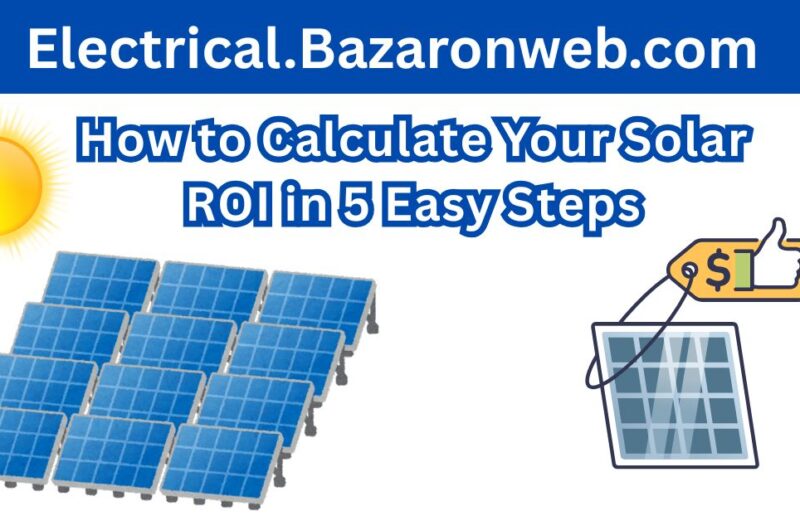Investing in solar panels isn’t just about saving the planet—it’s about saving money. To truly understand how solar pays you back, you need to calculate your Return on Investment (ROI).
Whether you’re a homeowner in Lucknow or a business owner in New Jersey, this simple 5-step guide will help you estimate your solar ROI with confidence.
✅ Step 1: Find Your Total Solar System Cost
This includes:
- Solar panels
- Inverter
- Batteries (if any)
- Installation & labor
- Permits & paperwork
Example:
A 5 kW system might cost $15,000 before incentives.
✅ Step 2: Apply Incentives and Tax Credits
In the USA (2025), the Federal Solar Tax Credit gives you 30% off your total cost. Some states offer additional rebates or net metering benefits.
Example:
$15,000 × 30% = $4,500 tax credit
Net cost = $10,500
✅ Step 3: Estimate Annual Savings on Electricity Bills
Calculate your current monthly electricity bill and multiply by 12.
Example:
Monthly bill = $150 → Annual savings = $1,800
If you use batteries, your savings may be even higher by avoiding peak time rates.
✅ Step 4: Determine Your Payback Period
Payback period = Net system cost ÷ Annual savings
Example:
$10,500 ÷ $1,800 = 5.8 years
So, in less than 6 years, your system pays for itself—and then gives you nearly 20 years of free electricity.
✅ Step 5: Calculate ROI
Solar systems last 25–30 years. Subtract your payback years to find the free electricity period, then calculate total returns.
Total ROI = (Years of Free Power × Annual Savings) ÷ Net Cost × 100
Example:
- Free years = 20
- Total savings = $36,000
- ROI = ($36,000 ÷ $10,500) × 100 = 343%
🌞 Final Thoughts
Solar ROI depends on:
- Your electricity rate
- Local sun hours
- Incentives available
- System efficiency
But the math is simple: Solar pays off.
A properly designed solar system isn’t an expense—it’s a smart investment that brings consistent returns for decades.
Need a personalized ROI calculator or help estimating your energy savings? Reach out to a certified EPC professional.

